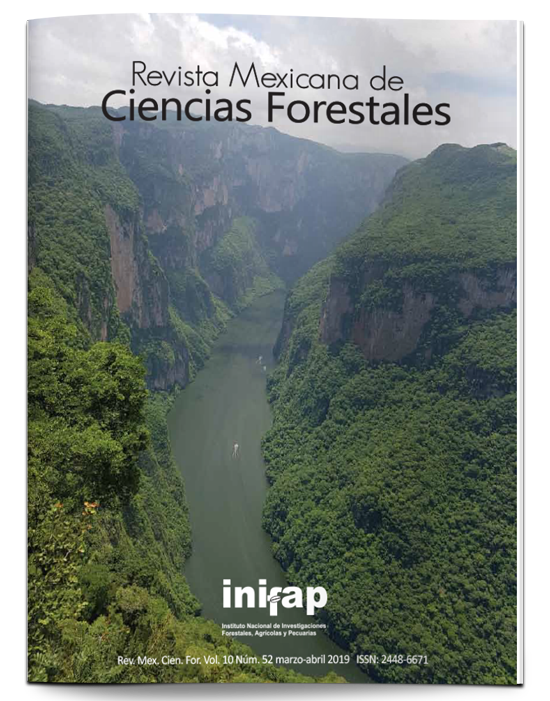Land-use change, landscape fragmentation and the conservation of Leopardus pardalis Linnaeus, 1758
DOI:
https://doi.org/10.29298/rmcf.v10i52.395Keywords:
Mountain mesophilic forest, carnivores, connectivity, mammals, tropical rain forest, exchange ratesAbstract
In Mexico, the tropical rain forest and the mesophilic mountain forest have been eliminated and fragmented, and in these ecosystems is where the ocelot (Leopardus pardalis), a species considered in danger of extinction in Mexico, lives. The objective of this work was to determine the changes in land use, fragmentation of primary vegetation and its effects on the ocelot, in a key area for the connectivity of their populations. To carry out this work, the rates of change in vegetation and land use were calculated, and a fragmentation analysis was carried out. For the registration of ocelots, trap cameras were placed in an area of 110 km2. The results showed a change rate of -2.63 and -2.29 for the tropical rain forest and the mountain mesophilic forest, respectively. Ocelot observations occurred inside or very close (1.6 km) to areas with a connectivity value > 10 %. The size of the habitat fragments was small: 0.85 ha for mountain mesophilic forest and 1.04 ha for tropical rain forest; and the connectivity between them was <30 %. These results reflect the need to keep landscape connectivity for the conservation of L. pardalis populations.
Downloads
Published
How to Cite
Issue
Section
License
The authors who publish in Revista Mexicana de Ciencias Forestales accept the following conditions:
In accordance with copyright laws, Revista Mexicana de Ciencias Forestales recognizes and respects the authors’ moral right and ownership of property rights which will be transferred to the journal for dissemination in open access.
All the texts published by Revista Mexicana de Ciencias Forestales –with no exception– are distributed under a Creative Commons License Attribution-NonCommercial 4.0 International (CC BY-NC 4.0), which allows third parties to use the publication as long as the work’s authorship and its first publication in this journal are mentioned
The author(s) can enter into independent and additional contractual agreements for the nonexclusive distribution of the version of the article published in Revista Mexicana de Ciencias Forestales (for example, include it into an institutional repository or publish it in a book) as long as it is clearly and explicitly indicated that the work was published for the first time in Revista Mexicana de Ciencias Forestales.
For all the above, the authors shall send the form of Letter-transfer of Property Rights for the first publication duly filled in and signed by the author(s). This form must be sent as a PDF file to: ciencia.forestal2@inifap.gob.mx
This work is licensed under a Creative Commons Attribution-Noncommercial 4.0 International license.






